I’ve been wanting to make a color theory and color mixing video for YEARS! I’m so exciting to finally share this video that I made showing you how I mix my colors for art class with tempera paints.
(Watch Part 2 here, where I show you how to mix skin tones using primary colors.)
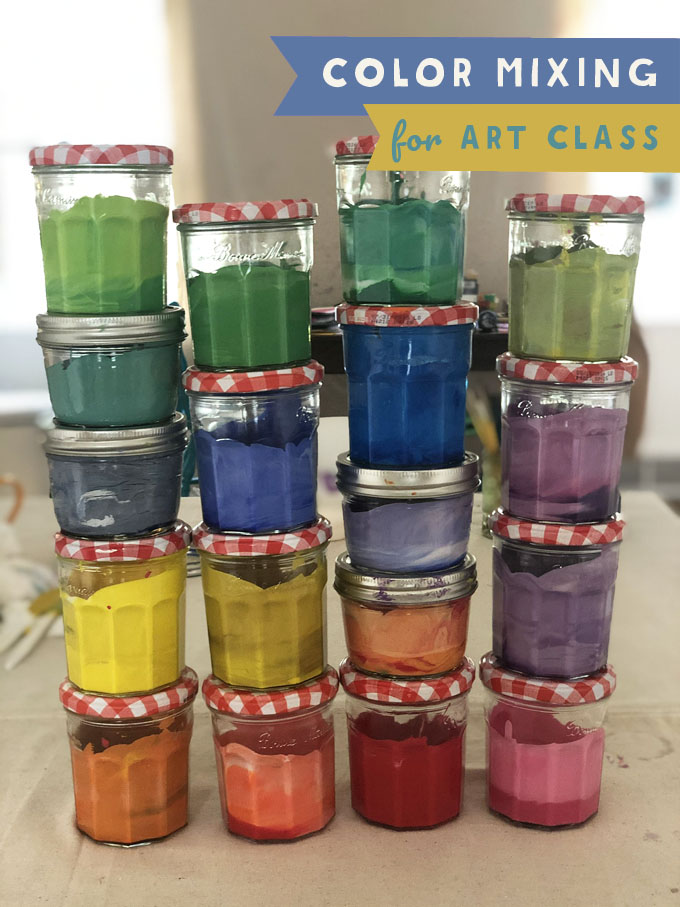
[ I am a participant in affiliate programs designed to provide a means for bloggers to earn small fees at no cost to you by linking to Amazon.com and affiliated sites. ]
If you want to mix along with me, here are the materials you will need.
Color Mixing Paints and Supplies:
~ Blick Student Grade Tempera Paint (16oz blue, red, yellow, orange, magenta, violet, green, black, and 32oz white)
~ RAS Tempera Paint – I use this brand in the video but I can’t find it online. I got it at my local art supply store.
~ Crayola Tempera Paint – set of 8 basic colors in 16oz bottles (I used Crayola all the time and it works just as well as RAS)
~ Other specialty tempera colors – Crayola magenta, Crayola shocking pink
~ Jam jars (we buy Bonne Maman with the gingham lid – they are the perfect size)
~ Plastic knives for stirring and mixing
~ Muffin top pan (for storing jars of paints) or a cardboard box that is no taller than the height of the jars
Watch the Color Mixing Video!
In this video (above) I show you all my tricks. I begin by showing you the color wheel and talk a little about primary, secondary, and tertiary colors. I show you how to get more opaque colors, and how to mute a color using it’s complementary color on the color wheel. Mixing paints sounds intimidating until you see how easy and foolproof it really is. Start collecting those jam jars!
(Click here if you can’t see the video above.)
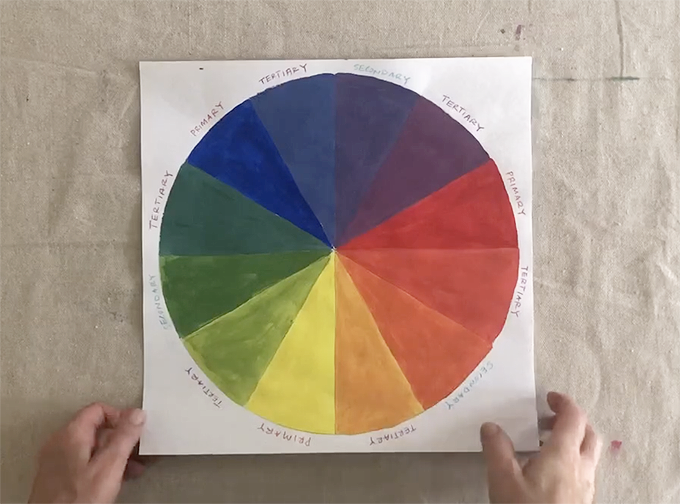
Here is a quick color theory and color mixing overview with a few photos from the video.
Color Mixing for Art Class
1. Let’s start with the color wheel. You have your primaries: red, yellow and blue. Then you have your secondaries (the colors that are made by mixing two primaries): orange, purple and green. Lastly, you have your tertiaries. These are the hundreds of colors that are made by mixing one primary and one secondary, which are by far the most beautiful and interesting colors with the best names.
For example: blue + green = teal, red + orange = coral, purple + red = mauve, yellow + green = lime. And on and on. I spend most of my time mixing tertiary colors since the primaries and secondaries come right out of the bottle. You can buy tertiaries out of the bottle, too, but where’s the fun in that? It’s good to learn the theory behind color mixing. You can buy as many colors of paint as you want, but to know how to mix them yourself with just the basics is really satisfying.
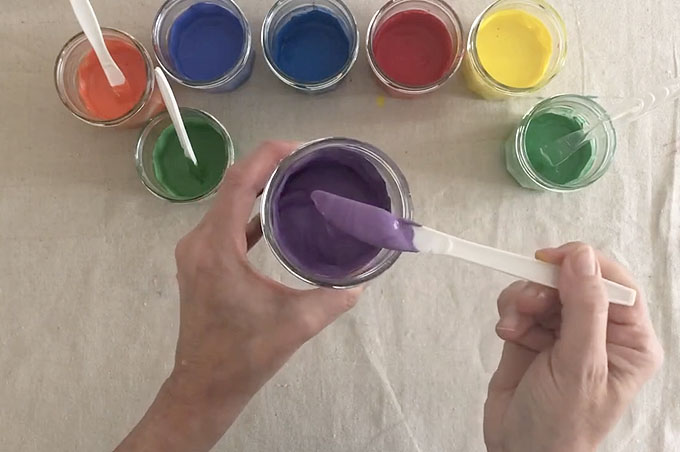
2. Here I have mixed the 3 primaries and 3 secondaries. (I actually mixed two different blues, one was cooler and one was warmer.) By “mixed” I mean I added white to all of them. Adding a little white makes them more opaque, which is important when painting on cardboard. We paint on a LOT of cardboard.
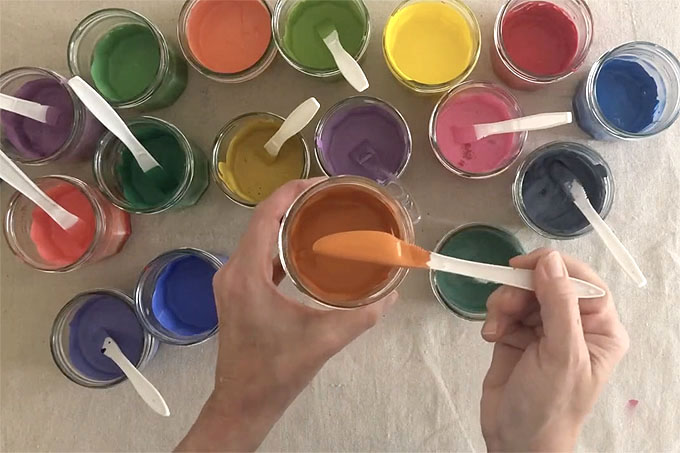
3. Now comes the fun part, which is mixing all the tertiary colors. In the video I make teal (blue + green + white), mauve (purple + pink + white), chartreuse (yellow + green + white), coral (orange + red + white), periwinkle (blue + purple + white), pumpkin (orange + drop of blue + white), mustard (yellow + drop of purple + white), and a few more.
The theory behind mixing a “drop of blue” with orange, or a “drop of purple” with yellow has to do with complimentary colors. On the color wheel above, yellow and purple are opposite each other on the color wheel. As are red and green, and blue and orange. The theory is that if you mixed the complementary colors in equal amounts (this term is actually misleading in that normally the word complementary means getting along, but in this case the colors cancel each other out, so I often use the word contrasting instead) — they would make brown. (This is in fact how I make the skin tones in my PART 2 video.) But if you use just a drop of the complementary color, then it mutes the color in a way that you wouldn’t be able to do by adding gray or black.
So adding a drop of purple to yellow makes it mustard, and adding a drop of blue to orange makes it a pumpkin spice, and adding a drop of red to green would make it an olive. This is in fact how I mix my most favorite colors. It’s so fabulous to have a table full of color options for children that aren’t just the usuals. They notice the difference between a bright and a muted orange, and they appreciate learning new vocabulary.
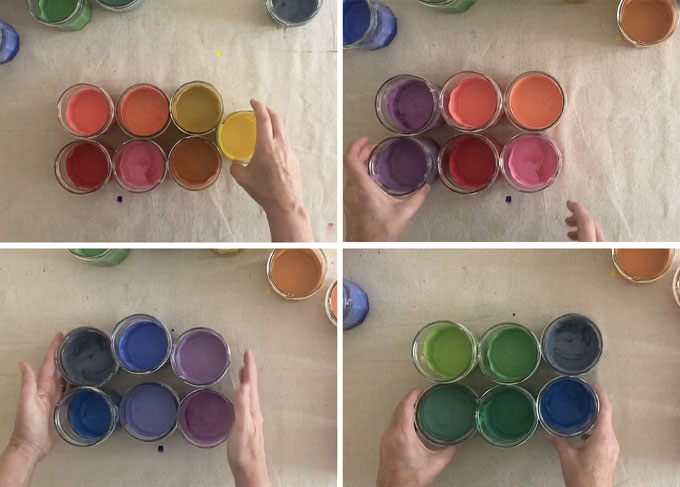
4. Lastly, let’s talk about color families. I like to put out color families for certain projects. If we are printmaking for example, or if I have some very young children who I know will just plop their brush in every color. Putting out a color family prevents paintings from turning greyish and mucky. There is definitely value in letting toddlers mix all the colors, and they do not care at all – it’s all about the process for them. But if you want their paintings to stay brighter, then put out a color family. This means choosing colors on the color wheel that are next to each other, from one primary to the next and everything in between.
So all the colors in between red and yellow are a family (oranges, peach, pinks, mustard). And all the colors in between blue and red are a family (purples, periwinkle, mauve). And so on.
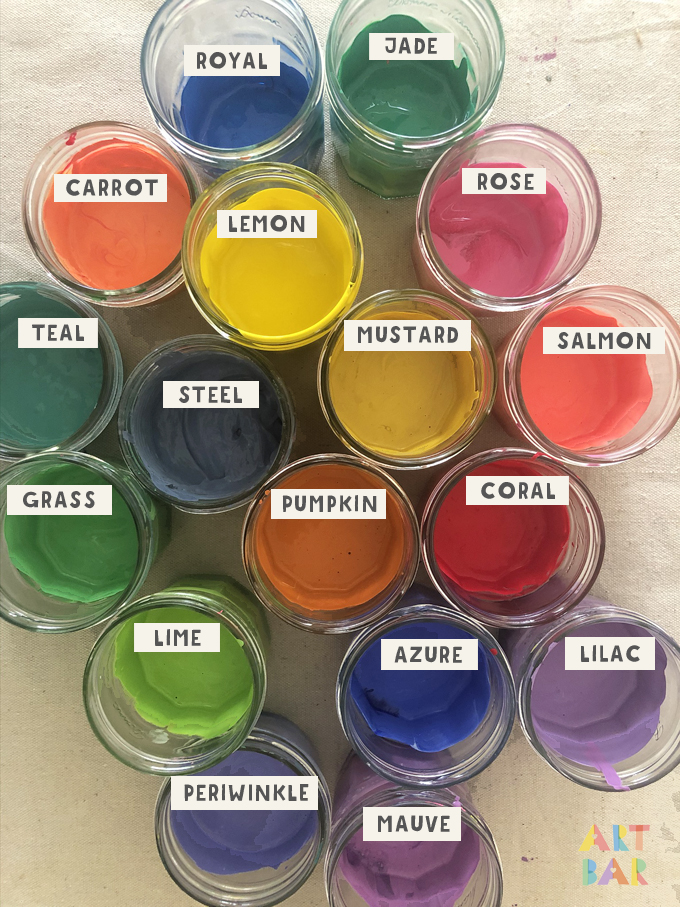
Mixing colors is SO FUN!! And you really can’t go wrong. Just add white and any color becomes beautiful.
And here are some sample of painting on cardboard from art class. You can see how adding white to colors really helps with opacity and coverage.
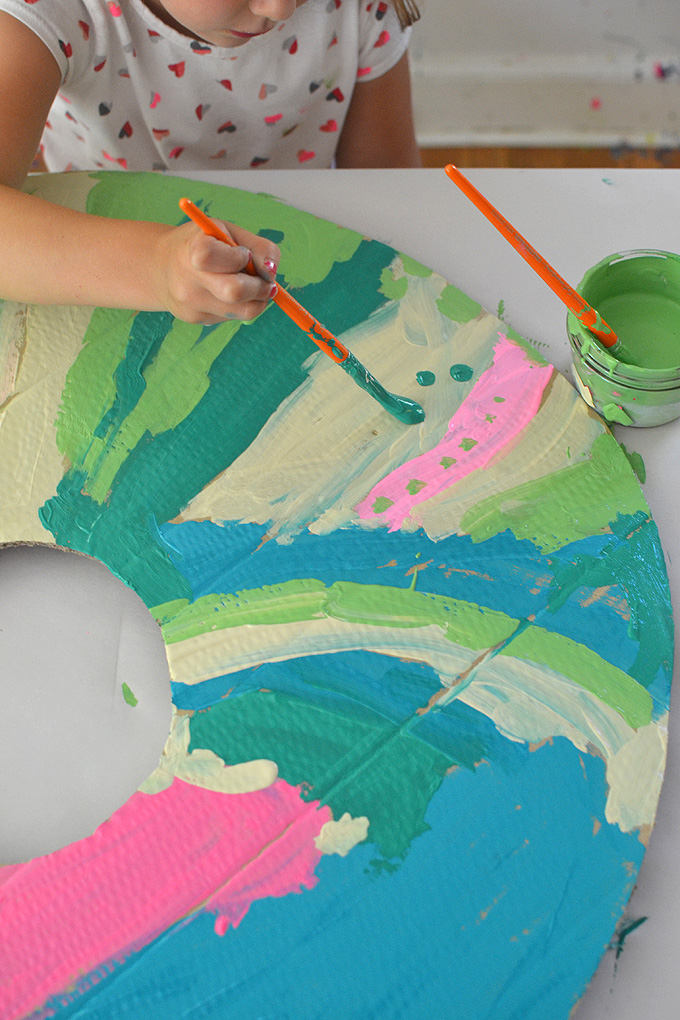
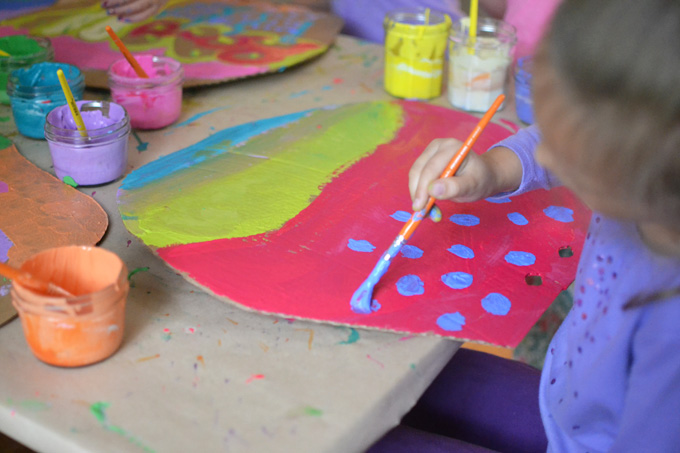
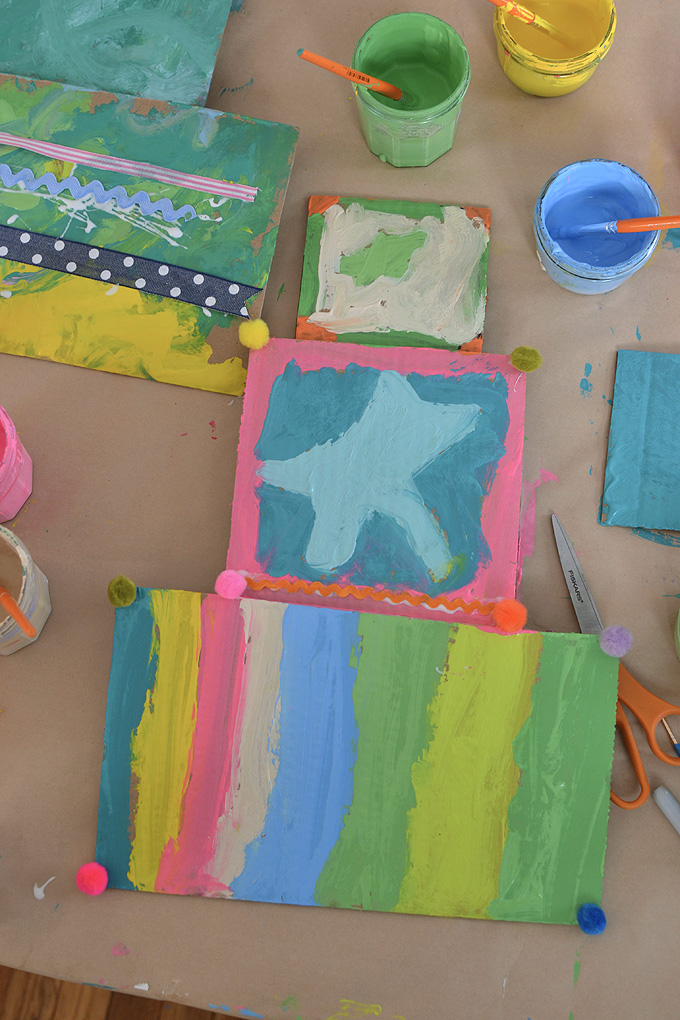
One last tip: I also always put out a jar of white or off-white and a jar of hot pink (linked up top under the supplies, and yes I mix a little white into the hot pink, too).
Be sure to watch my color mixing PART 2 video where I show you how to mix skin tones from primary colors.
Happy mixing!
xx Bar
– – – – – – – – – – – – – – – – – – – –
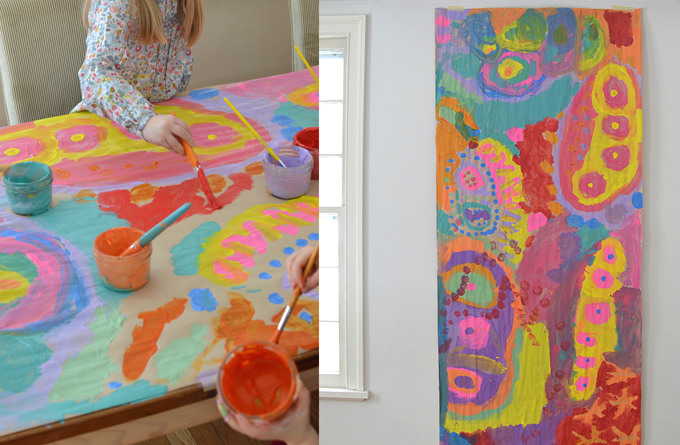
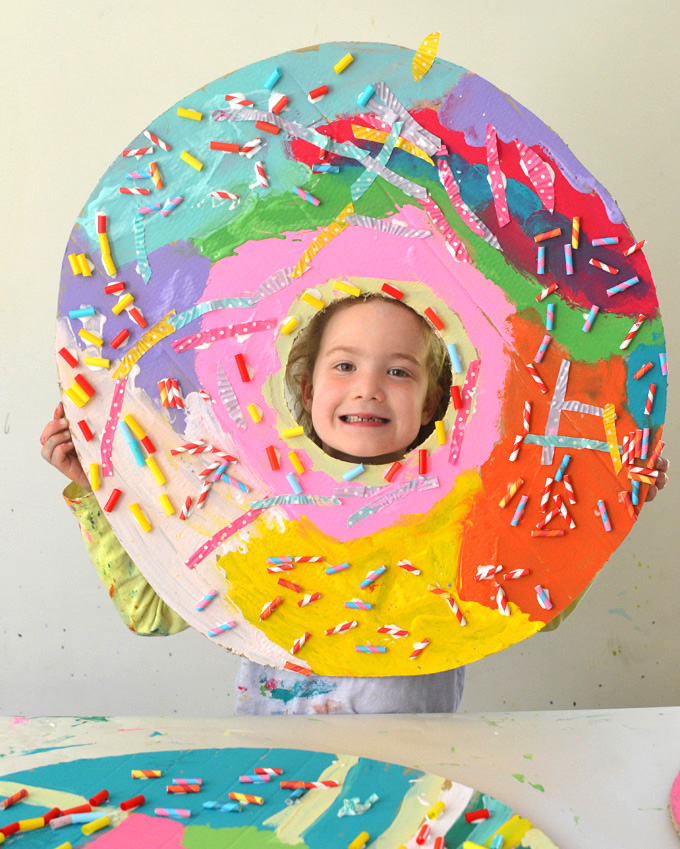
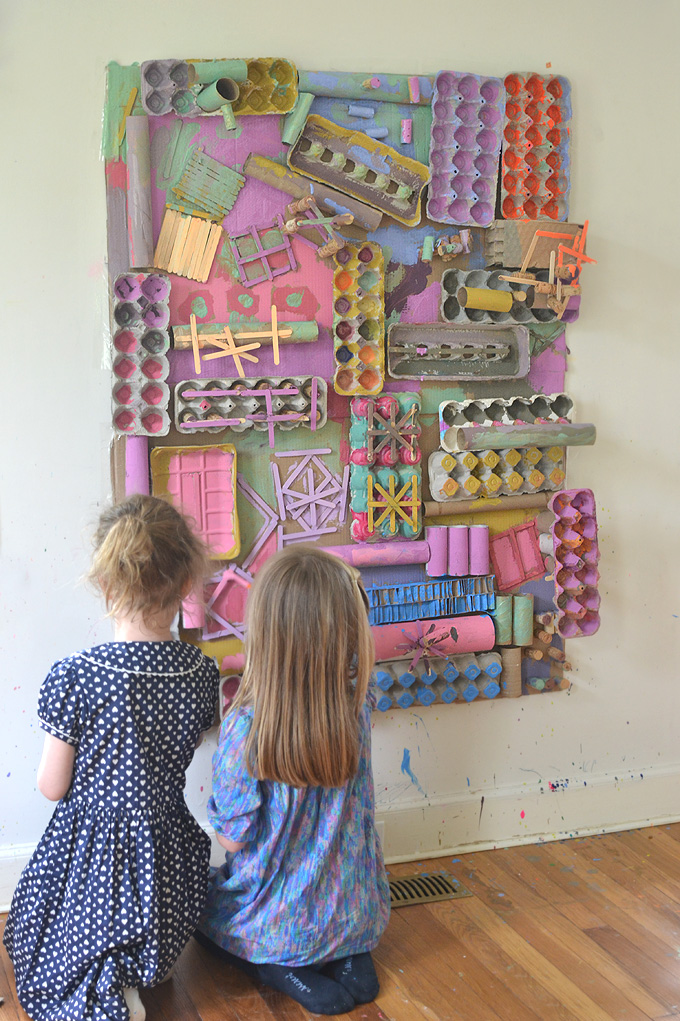
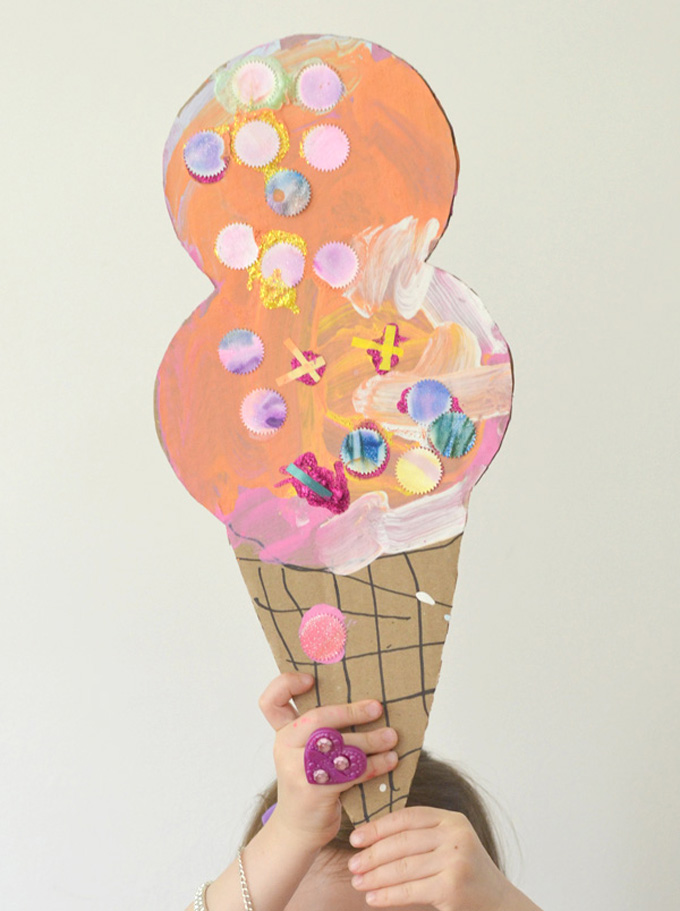
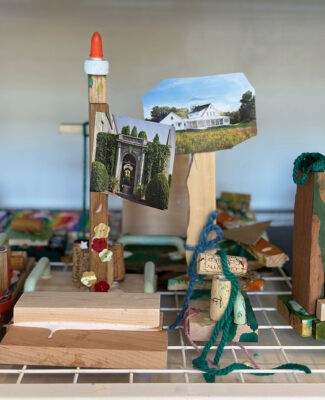
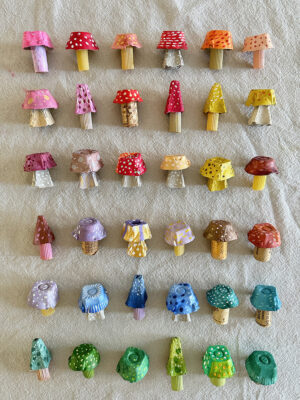
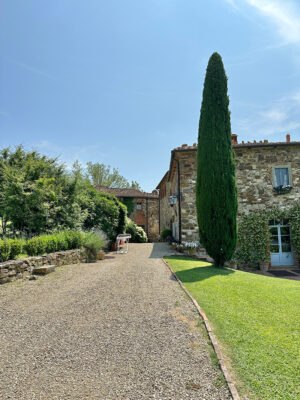

Hi Bar!
Thanks for sharing this!
Just wanted to ask how do you dispose of the paintbrush rinse water from any of your painting activities? Do you have different methods for different paint medium (acrylic, tempera, etc.)?
Also, how do you manage/store left over paint?
I do art with kids and have used tempera and acrylic paint this season. I’m a newbie to organizing and cleaning up paint materials and would like to learn the best practice for clean up and disposal of waste produced in painting with kids.
Thank you!
Hi Camille! You just reminded me that I do have photos of how I store my paints, I will add those photos to next weeks color mixing post on how to mix skin tones. But basically I wash all my paint in the kitchen sink. I only use water-based paints so it’s not a problem. If I was using oil paints I would have to designate a different “art” sink for that. But acrylics and temperas both wash with water. I store my temperas in the jars, then put them in the muffin-top pan or a cardboard box (as seen in the video) and then stack them and store in a closet. I don’t usually save acrylics, unless we will continue a project to the next day, then I put some plastic wrap over the palettes. Check back next week for more color mixing and the photos of my art closets where I store my paints! xx Bar
I can’t seem to find the link to watch the video. Would you please direct me to the link? Thanks
Hi Lisa, there is no link, the video is embedded right above where it says “Watch the color mixing video”- I hope you can find it! xx Bar
I’m in the same boat as Lisa! I’ve tried both Chrome and Safari, and a laptop as well as my phone. Help! I looked right where you said, above where it says “Watch the color mixing video” and I can’t see any link at all. I feel so dumb asking but…any ideas? I really want to watch it!
I can’t see the video, either! I’m on my iPad on Safari and I don’t see a link where you say it is. I’d love to see it sometime! Thanks!
hi Emily, I added a link. Hope this helps!
Hi Adrienne, I have posted an external link underneath the embedded video that says “Click here if you can’t see the video above” – hopefully this will work! xo Bar
I had this issue as well, but once I turned adblocker off, the video appeared. Hope that helps!
The video isn’t working for me either, on my phone or desktop computer.
Becky, I have posted a link to the video.
This is really just lovely. My mind has been opened to tertiary colors!! Arts and crafts at home have always had a certain level of blah to me but these colors have changed my mind. Now I want to do all the projects! Thank you 🙏🏼